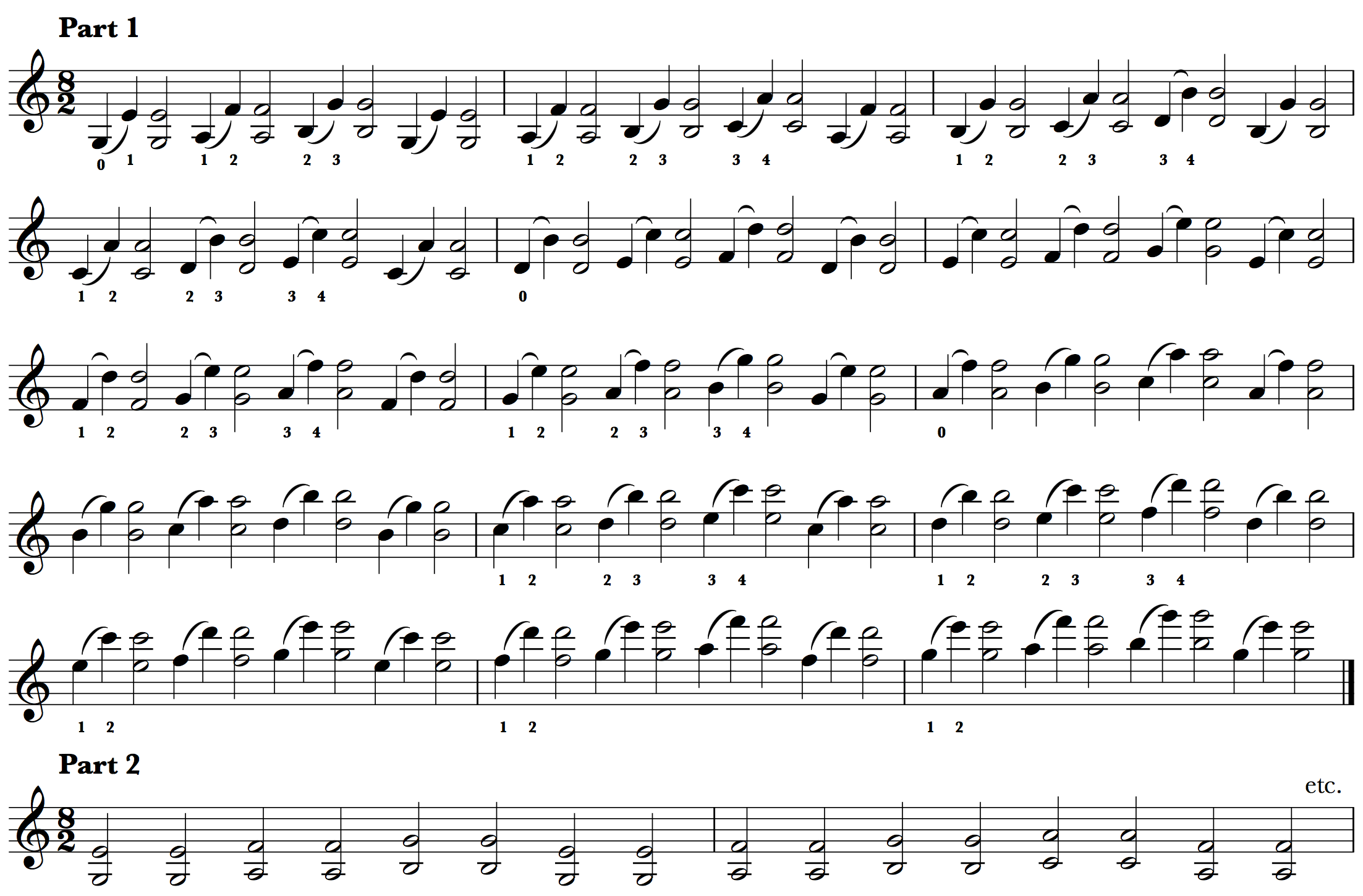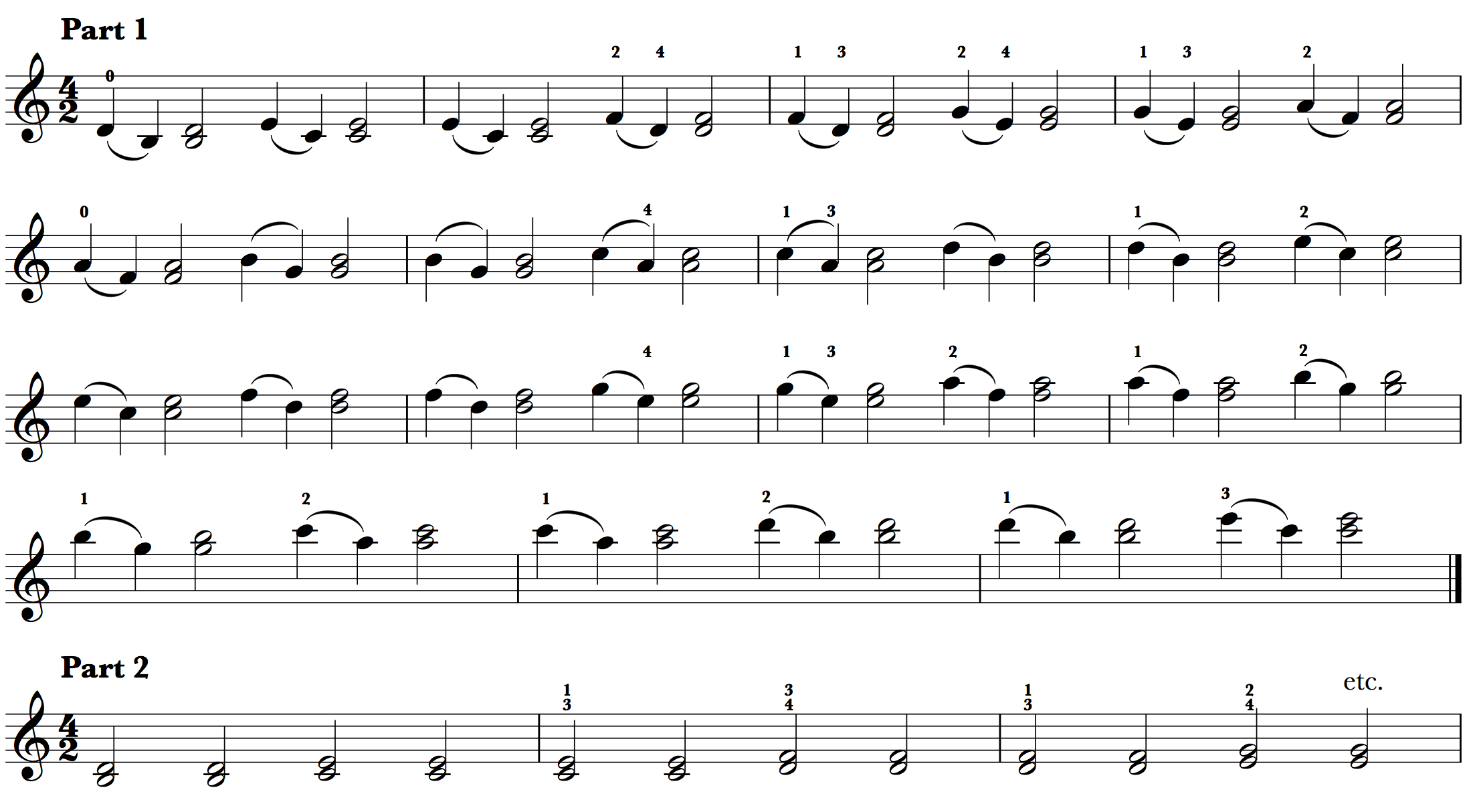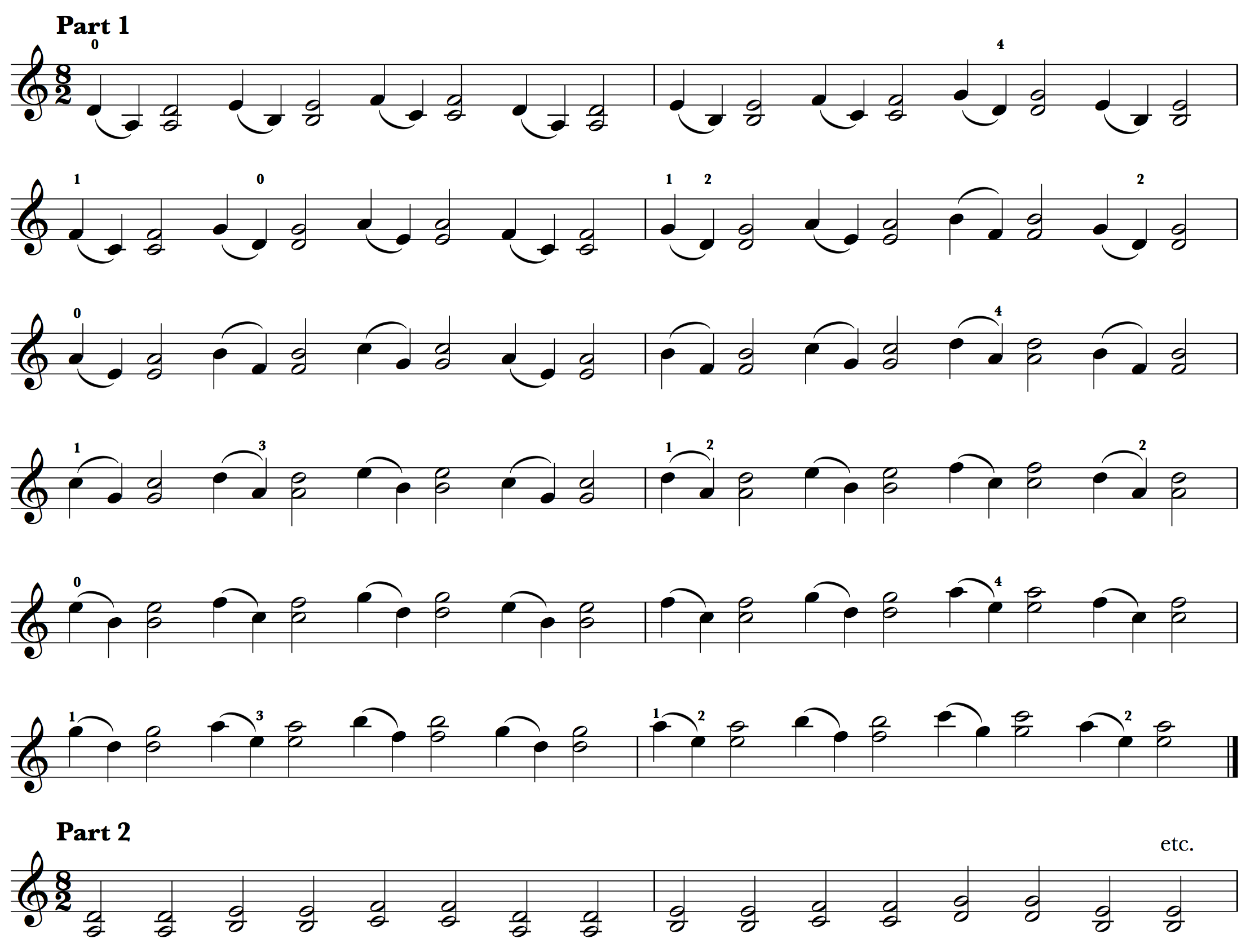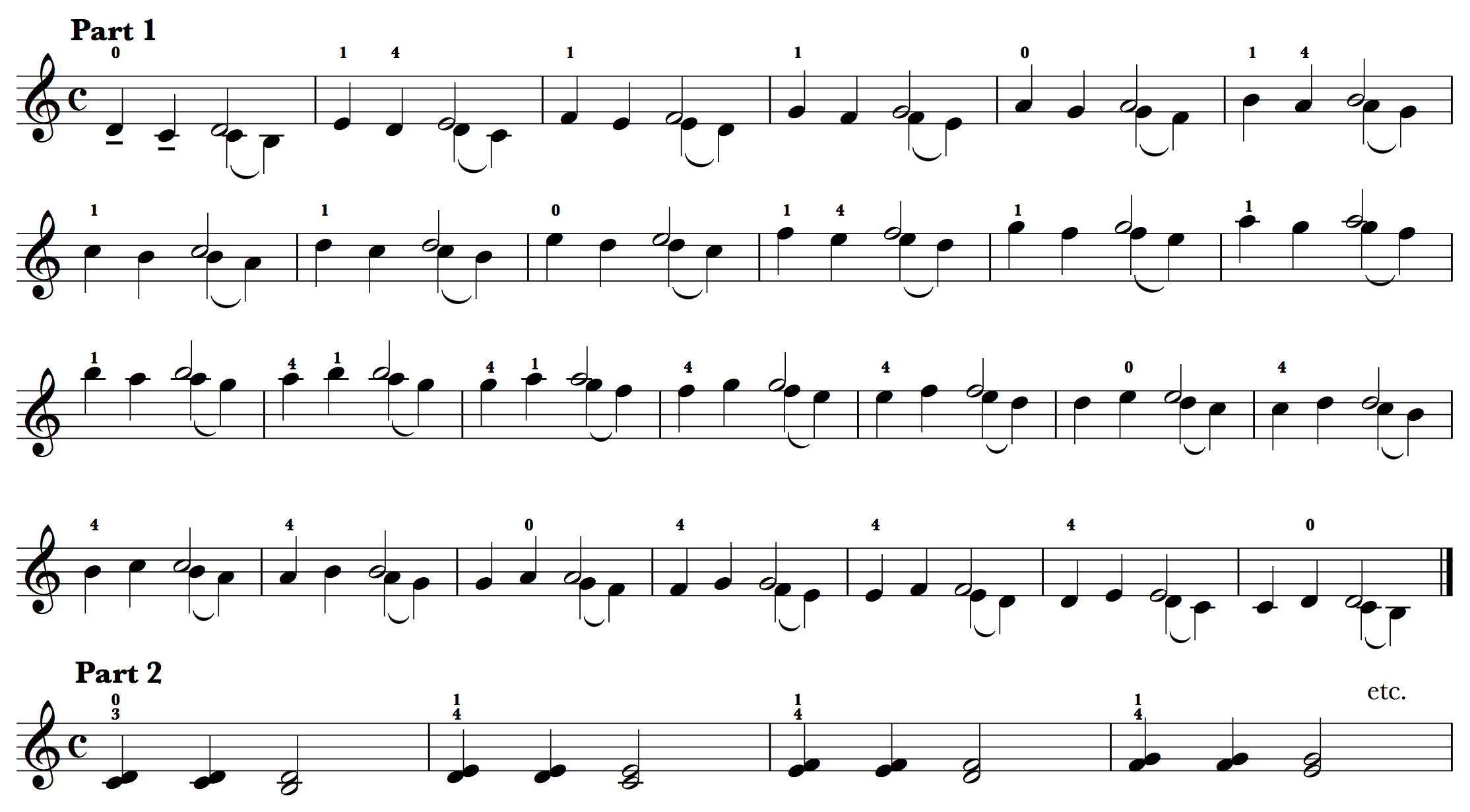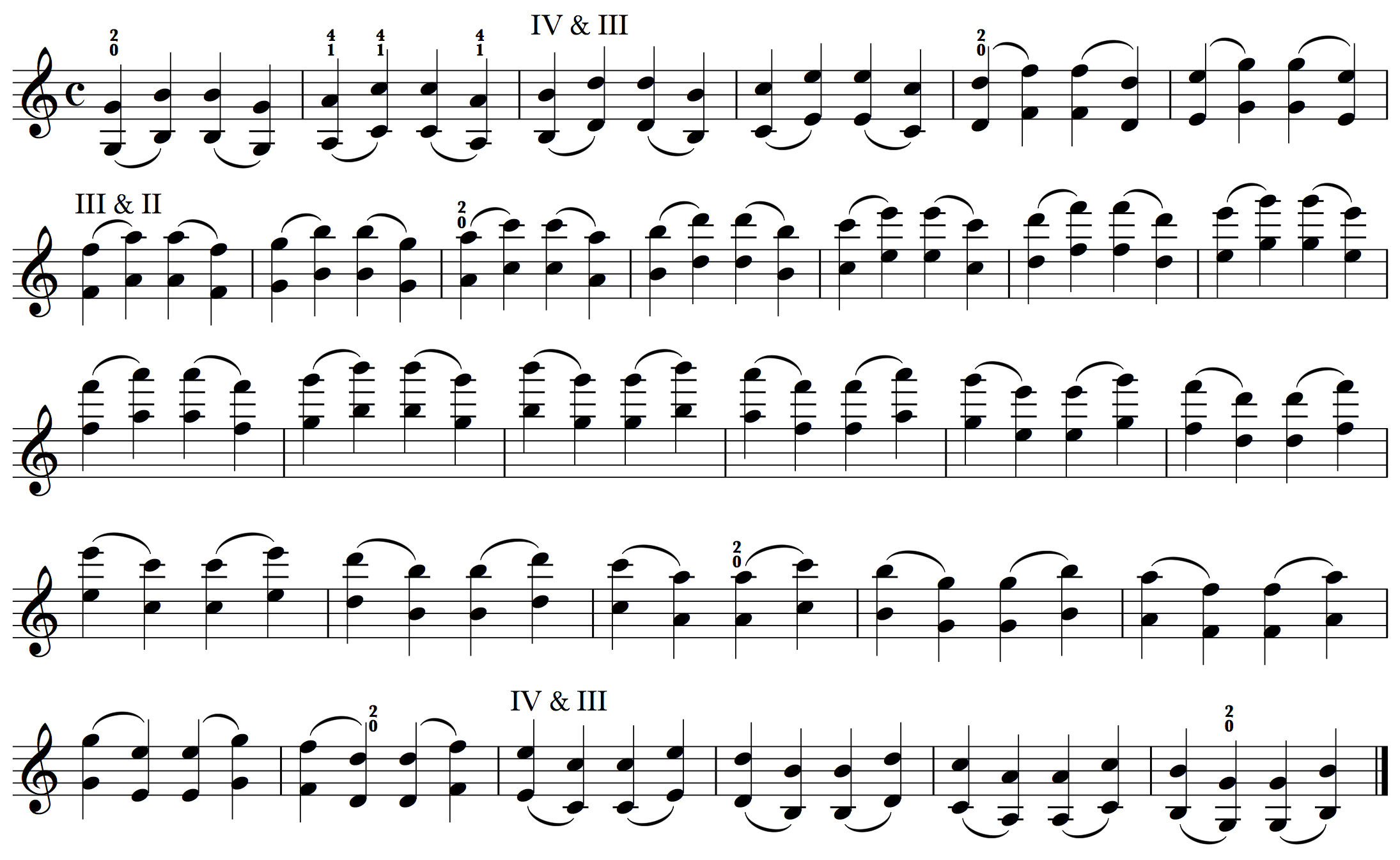The Beginners Guide to Violin Double-stopping
Violin Double-Stopping
What is a double-stop?
It is simply the playing of two notes on adjacent strings, at the same time.
Because the violin has four strings it is also possible to play triple and quadruple-stops. We will deal with just double-stopping here.
That sounds hard...
There is a terrific amount of variation in the level of difficulty of double-stopping, from the very easy to double-stops that even professional players find taxing. Also bear in mind that the shape of a player's hands will be an important factor. Sometimes a very great player might not be able to play something that an average player can, simply because he or she might have smaller hands. This is only an issue in extreme cases however, so you should not worry, even if your hands are small.
Types of double-stopping
1.
At the most basic level double stopping is the playing of two open strings. The strings must, of course, be next to each other, so the only options available with this kind of double stopping is G and D:
...D and A...
...and A and E:
A surprising number of composers make use of this type of double-stop, because it is easy to play and the open strings give a very clean and resonant sound. Try playing, for example, the lower part of David Bruce's Parkgate High for violin duet, for example. The lower part makes frequent use of this type of double-stopping.
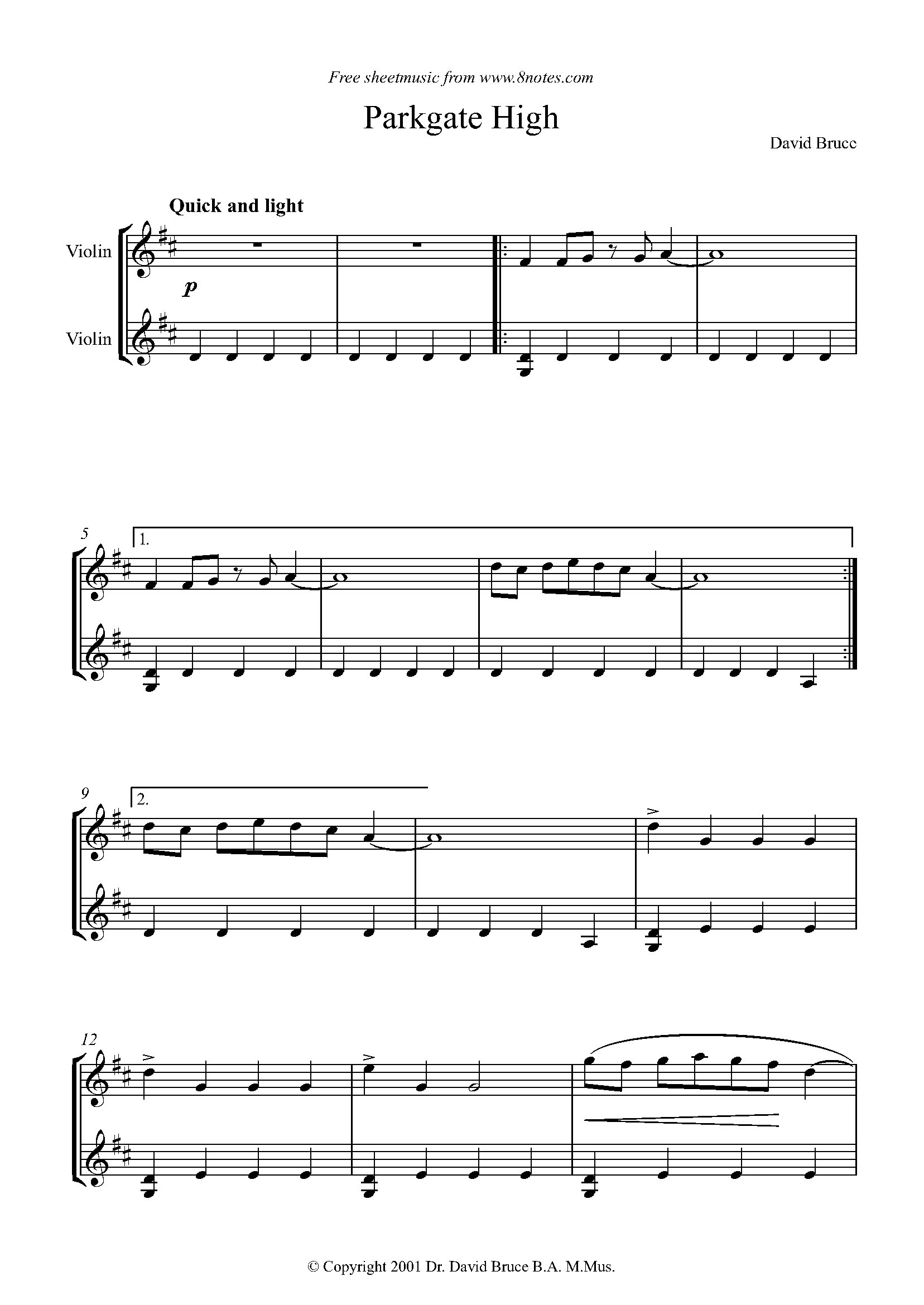
David Bruce - Parkgate High
As a general rule, the position of the bow is exactly in between that that you would adopt if playing either string individually. It is also a good idea to keep the bow hair flat on the two strings. This will give a solid and consistent sound.
2.
You will notice in Parkgate High that at bar 15 the upper note moves from an A to a B in the second violin part. This is the second form of double-stopping, where the upper note is fingered,
the lower note open. This is also relatively easy, since, as long as the bow is correctly positioned to play the two strings, you can concentrate on fingering the upper line.An ideal piece for practising this type of double stopping is David Bruce's violin duet Agent in Egypt. Here the lower part moves chromatically from two open strings, to fingered upper part and then back to open strings:
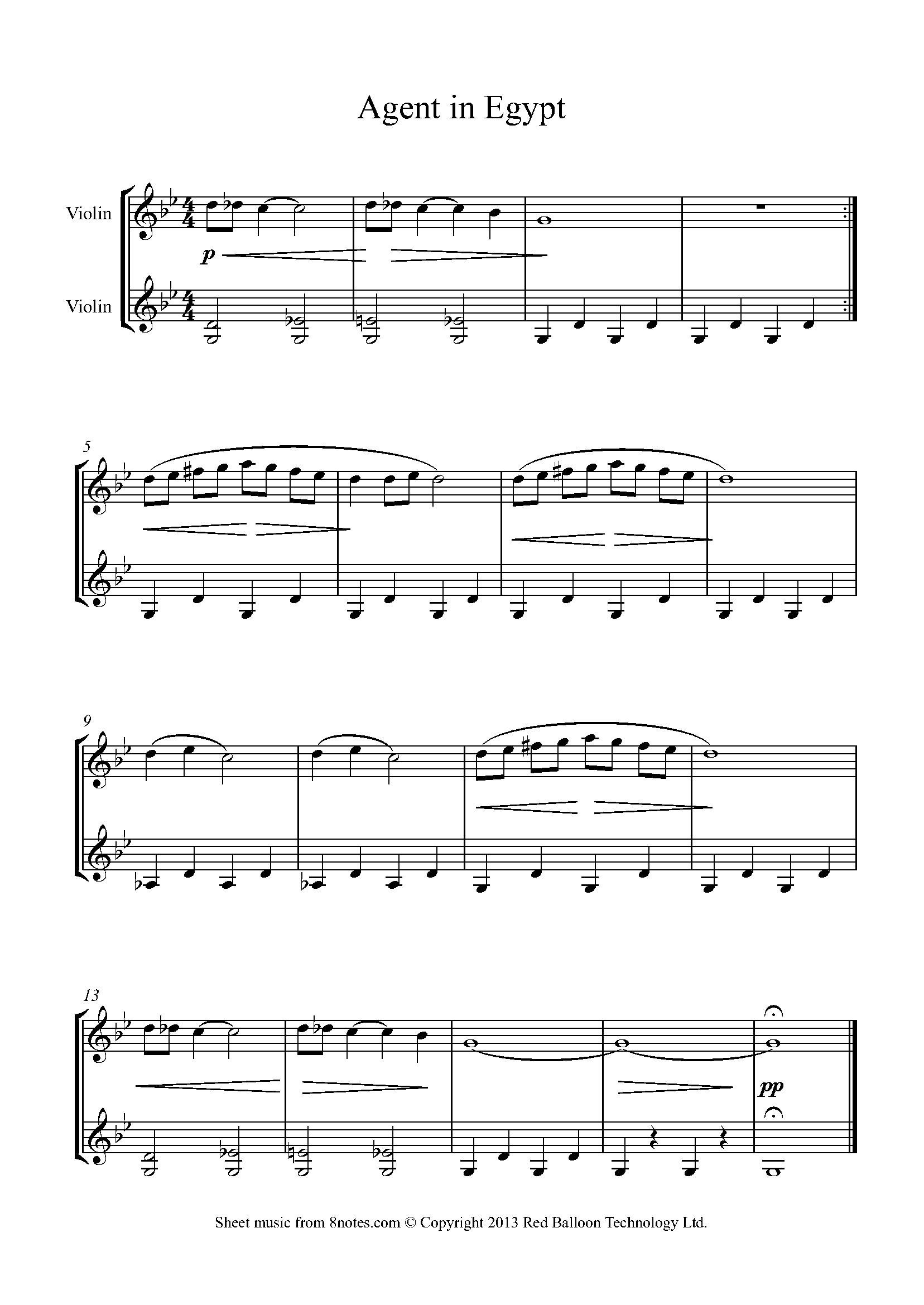
David Bruce - Agent in Egypt
3.
The third type of double stopping is where the upper note is an open string, whilst the lower note is played:
This is more difficult to play, since here the finger must form an arch so that it does not accidentally press the upper string. Violinist Simon Streuff explains in greater detail:
4.
The greatest challenge of all is in the fourth category of double stopping, where both notes are fingered.
Basing our learning on exercises by the Czech violinist Otakar Sevcik, we will divide the process according to the interval (i.e. the distance between the two notes) of the double stop in question.
You should proceed gradually to the end of each exercise, only moving to higher positions when the lowest have been mastered. Play the exercises slowly, taking care that individual notes sound correctly before playing two notes together. In the second part of the exercise the double stops are played together throughout.
Exercise in sixths
Exercise in thirds
Exercise in fourths
Exercise in seconds





